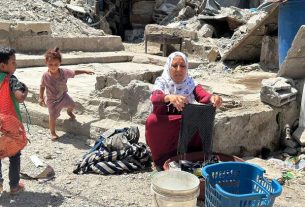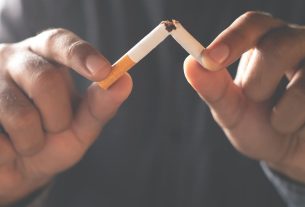[ad_1]
Infectious diseases are still a leading cause of death among children around the world and they are more likely than adults to contract such illnesses because of crowding at home or in school.
But there has hardly been any serious into measuring children’s responses to sick faces and understanding how youngsters’ ability to recognize and avoid sickness develops to help protect them. Previous research has found only that adults can use faces to recognize if someone is sick and decide whether to approach or avoid them.
Researchers from the University of Miami in Florida; Chinese University of Hong Kong Shenzhen; Duke University in North Carolina and James Madison University in Virginia addressed this question by collecting photos of people’s faces when they were sick with a short-term, contagious illness like COVID-19 and when they were feeling healthy after having fully recovered.
Their study, published in the journal Child Development under the title “Infection detection in faces: Children’s development of pathogen avoidance,” is among the first to use face photos from those experiencing natural symptoms of illness and the same individuals when they are healthy. The findings showed that adults and older children (eight to nine year olds) were able to avoid and recognize sick faces.
Humans are thought to have evolved a behavioral immune system that detects and makes possible the avoidance of contagious pathogens before making close contact with them, they wrote. For example, adults recognize odor and body movements of people with experimentally induced systemic inflammation (mimicking bacterial infection), but these cues may be unreliable as detecting odors requires close contact, at which point a person may be exposed to potentially dangerous pathogens.
“Building upon our previous studies in adults, we hypothesized that sensitivity to facial cues of sickness would emerge in childhood (ages four to nine). We predicted that this sensitivity would increase with age, reflecting a behavioral immune system that becomes fine-tuned through experience,” said Tiffany Leung, a developmental psychology doctoral student at the University of Miami who led these studies. “By better understanding how people naturally avoid illness in others, we may identify what information is used and ultimately improve public health.”
How did the researchers explore children’s ability to decipher sickness?
To conduct the study, children were recruited through online advertisements like social media) and partnerships with local organizations like maternity centers and museums). Adults were recruited through the undergraduate research participant pool at the University of Miami. The study sample included 160 individuals aged four to five, eight to nine, and adults.
The study was conducted online, with child participants primarily located throughout North America and the UK. Children received a $10 gift card, and adults received course credit for participating.
The study was completed on Zoom between August 2021 and March 2022 through child-friendly online games. The children were presented with two faces (one sick and one healthy) from the same person, side by side. In the first game, participants were to choose among faces (“Which twin would you rather sit next to at dinner?”) to assess their preference for approaching healthier people.
In the second game, participants were asked to identify which person was feeling sick. Participants were told, “Imagine that you’re a hospital doctor and it’s your job to figure out who is sick so you can help them feel better. Which twin do you think is the one who is feeling sick?”
The research found that kids aged eight or nine can recognize and avoid sick faces. In addition, adults were more accurate at avoiding and recognizing sick faces than these older children who were more accurate than those aged four or five, suggesting that these skills improve with age. Children who were more accurate at recognizing sick faces were also more accurate at avoiding them.
University of Miami associate Prof. Elizabeth Simpson noted that “to explore whether we can improve sick face perception skills and improve public health, we are continuing to collect sick face photos
The authors noted that most of those questioned were white and non-Hispanic and that being of other races or ethnic groups could influence sick-face perceptions. The study used only still images of faces whereas, in the real world, children have access to voices and body movements so future studies are necessary to further explore these issues.
[ad_2]
Source link



